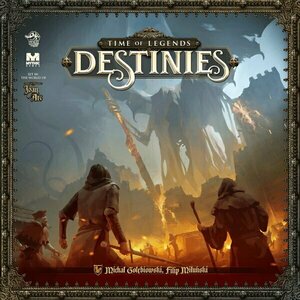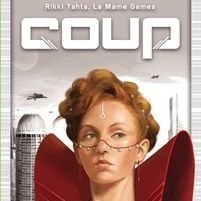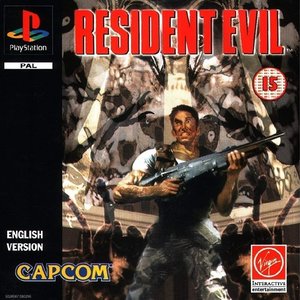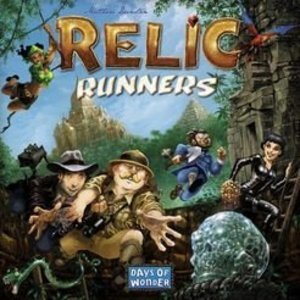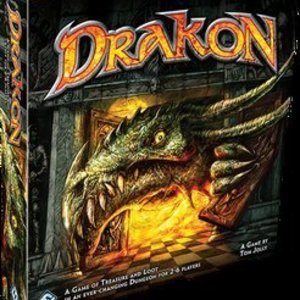Search
Search results
Purple Phoenix Games (2266 KP) rated Destinies in Tabletop Games
Jan 29, 2022
I can recall so many instances of my board game purchases being based on either the designer, artist, or publisher. Surely I am not alone here. Josh will probably always be a Stonemaier Games fanboy. Laura has aligned herself with Daily Magic Games and Button Shy Games. While I am a big fan of the Valeriaverse, I think my current preferences put me on teams Weird Giraffe Games, Blue Orange Games, and Lucky Duck Games. Speaking of the latter, LDG have come through with some seriously excellent hybrid app-driven games that just wow me every single time. I was definitely a hybrid game naysayer when the first Chronicles of Crime came out, but the more I play them, the more I appreciate the accomplishments. Destinies has now come along to me and it has been some time since I have been this jazzed to play a game over and over and over and over.
Destinies is a hybrid app-driven adventure board game for one to three players. In it, players will be choosing their characters and how to play them, along with the path of their individual destinies across several campaign scenarios. When playing multiplayer, the player who completes their destiny first will win. When playing solo (which is also amazing), the player wins when they successfully complete their destiny.
DISCLAIMER: We are using the Kickstarter version of the game. We do have the expansions from the KS campaign, but will not be using those for this review. Also, we do not intend to cover every single rule included in the rule book, but will describe the overall game flow and major rule set so that our readers may get a sense of how the game plays. For more in depth rules, you may purchase a copy from the publisher directly or from your FLGS. -T
Usually I list out the steps to setup a game in this section, but there are so many little items and steps to be taken that I will simply show you, the reader, how a scenario may look once setup. The app will instruct players how to create their character’s stats and which map tiles should be placed out initially. Typically, though, each player will receive a player board, Destiny card (with their character headshot on one side and their Destiny choices on back), two main dice, three effort dice, and one gold coin. Once setup, the app will drive the story along and the players will be rolling dice and making choices in order to win the game or scenario.
Each player will be given their Destiny card with two distinct Destiny paths on the backside. These paths correlate with the current scenario, and the player will be able to choose one of the two given paths to help move their games forward. However, sometimes players will switch their Destiny mid-game due to several factors including successes on previous tasks or current inventory. The only way to win the game is to complete a Destiny, so staying on track is paramount in this open sandbox game – it is incredibly easy to become sidetracked and lose sight of specific tasks to be performed.
Each turn a player may move to a new tile, to previously-explored tiles, or points of interest on specific map tiles. These points of interest could be unique characters to be visited, or more general spaces on the tile represented by tokens. Sometimes visiting a POI (point of interest) will have the player rolling dice to complete tests, initiating trade with the POI NPC, revealing information about their distinct Destiny, or even issuing side quests. Players take their chances by visiting a POI because only one may be visited on a turn. Once a player has moved and visited a POI, their turn is over and the next player’s turn begins.
The most interesting aspect of this game is the experience tracker and results of tests. Player stats are divided between Intelligence, Dexterity, and Power (Strength for my D&D readers). These stats are constantly in flux due to tests and experience, and levels range from 1-12+ on the player board. A player will roll both main dice and any effort dice they wish on each test, and the total result is compared to the discs present on the main player board. One success is counted for each disc’s value equal to or below the rolled result. For example, if the roll is a 6, and the player has a disc on 3 and another on 6 the player counts two successes. Effort dice add values to the rolled result, and one side of these dice depict a star, which counts as one success. Throughout the game players will be moving their skill marker tokens (discs) up and down the tracks. Sometimes this is due to a test being failed or succeeded, but sometimes experience tokens are earned. A player may improve their skill levels by two total values on the tracks for each experience token discarded. Players may choose which tracks, and may maximize their character’s skill or spread out the experience across multiple skills.
Play continues in this fashion of referencing the app for story and plot items, players working toward completing their Destinies, and adventuring across the land rolling tests and improving skills until one player finishes their Destiny and wins the game!
Components. As always, I am going to be honest here by stating I believe that Destinies packs the box with the best components I have seen in a game. The multi-layered insert is perfectly formed and well-thought out, all the cardboard tokens are super-thick, the dice are so fun to handle and roll, the cards and other components feature incredible artwork, and did I mention there’s about a thousand minis in this game? I am reluctant to even call some of these things minis as they are large and in charge for SURE. I have zero complaints or comments on the components present in Destinies. Lucky Duck knocks it out of the park once again. Incredible.
I actually backed this one on Kickstarter just because it comes from Lucky Duck Games. I had played Chronicles of Crime and loved it, and just wanted to try something different but using a similar system. Typically I don’t keep up with the comments and updates to a game I have backed because I enjoy being surprised by the product that arrives at my door. Destinies was certainly a surprise to me, and I have been kicking myself in the butt for not getting it to the table the very first day I received it.
Destinies is my favorite Lucky Duck Games title, and that is saying a ton, as I rave about every game of theirs I have played. I hope you all back me up here, and if you haven’t yet tried this one, I hope you visit your closest friend or board game cafe that owns it. The tutorial scenario is great, and the campaign scenarios have been awesome so far. Okay, yes, when I first played it with Laura, my wife made several comments about it being a 3 hour game, but once that first one is completed, the subsequent plays run much smoother.
What I love so much about this is how indefinitely expandable it is. Most of the components are multi-use (akin to all the character cards in the Chronicles of Crime games), and can be used in campaign after campaign. The drawbacks I see for this, though, is any sort of waning interest in it forcing designers to abandon plans to create more scenarios. Could a new scenario pack be an acceptable expansion versus a large expansion box with oodles of new components and minis? I think so, but I am no designer. Could the Millennium Series treatment be given to Destinies? Absolutely! This system does not need to be played in a medieval fantasy world. It could be molded to almost anything, and that gives me excited shivers over the future of this game.
If you are anything like me and have now embraced the hybrid gaming trend, I highly recommend Destinies. I plan to also review all the expansions in the near future, so do look out for those, but please do yourself a giant favor and pick up Destinies. The excellent storytelling, great components, and just amazing fun helps Purple Phoenix Games give this one a perfectly deserved 12 / 12, and a Golden Feather Award! I can’t stop thinking about it and how I would play it differently next time, and hopefully after I have played through the expansion material I will be able to restart from the very beginning with different characters and choices. It’s a sign of a great game when I can’t stop thinking about it, and I do believe Destinies currently is knocking at the door of my Top 10 Games of All Time. No, it’s there. It’s totally there. TOP 10 BABY!!
Destinies is a hybrid app-driven adventure board game for one to three players. In it, players will be choosing their characters and how to play them, along with the path of their individual destinies across several campaign scenarios. When playing multiplayer, the player who completes their destiny first will win. When playing solo (which is also amazing), the player wins when they successfully complete their destiny.
DISCLAIMER: We are using the Kickstarter version of the game. We do have the expansions from the KS campaign, but will not be using those for this review. Also, we do not intend to cover every single rule included in the rule book, but will describe the overall game flow and major rule set so that our readers may get a sense of how the game plays. For more in depth rules, you may purchase a copy from the publisher directly or from your FLGS. -T
Usually I list out the steps to setup a game in this section, but there are so many little items and steps to be taken that I will simply show you, the reader, how a scenario may look once setup. The app will instruct players how to create their character’s stats and which map tiles should be placed out initially. Typically, though, each player will receive a player board, Destiny card (with their character headshot on one side and their Destiny choices on back), two main dice, three effort dice, and one gold coin. Once setup, the app will drive the story along and the players will be rolling dice and making choices in order to win the game or scenario.
Each player will be given their Destiny card with two distinct Destiny paths on the backside. These paths correlate with the current scenario, and the player will be able to choose one of the two given paths to help move their games forward. However, sometimes players will switch their Destiny mid-game due to several factors including successes on previous tasks or current inventory. The only way to win the game is to complete a Destiny, so staying on track is paramount in this open sandbox game – it is incredibly easy to become sidetracked and lose sight of specific tasks to be performed.
Each turn a player may move to a new tile, to previously-explored tiles, or points of interest on specific map tiles. These points of interest could be unique characters to be visited, or more general spaces on the tile represented by tokens. Sometimes visiting a POI (point of interest) will have the player rolling dice to complete tests, initiating trade with the POI NPC, revealing information about their distinct Destiny, or even issuing side quests. Players take their chances by visiting a POI because only one may be visited on a turn. Once a player has moved and visited a POI, their turn is over and the next player’s turn begins.
The most interesting aspect of this game is the experience tracker and results of tests. Player stats are divided between Intelligence, Dexterity, and Power (Strength for my D&D readers). These stats are constantly in flux due to tests and experience, and levels range from 1-12+ on the player board. A player will roll both main dice and any effort dice they wish on each test, and the total result is compared to the discs present on the main player board. One success is counted for each disc’s value equal to or below the rolled result. For example, if the roll is a 6, and the player has a disc on 3 and another on 6 the player counts two successes. Effort dice add values to the rolled result, and one side of these dice depict a star, which counts as one success. Throughout the game players will be moving their skill marker tokens (discs) up and down the tracks. Sometimes this is due to a test being failed or succeeded, but sometimes experience tokens are earned. A player may improve their skill levels by two total values on the tracks for each experience token discarded. Players may choose which tracks, and may maximize their character’s skill or spread out the experience across multiple skills.
Play continues in this fashion of referencing the app for story and plot items, players working toward completing their Destinies, and adventuring across the land rolling tests and improving skills until one player finishes their Destiny and wins the game!
Components. As always, I am going to be honest here by stating I believe that Destinies packs the box with the best components I have seen in a game. The multi-layered insert is perfectly formed and well-thought out, all the cardboard tokens are super-thick, the dice are so fun to handle and roll, the cards and other components feature incredible artwork, and did I mention there’s about a thousand minis in this game? I am reluctant to even call some of these things minis as they are large and in charge for SURE. I have zero complaints or comments on the components present in Destinies. Lucky Duck knocks it out of the park once again. Incredible.
I actually backed this one on Kickstarter just because it comes from Lucky Duck Games. I had played Chronicles of Crime and loved it, and just wanted to try something different but using a similar system. Typically I don’t keep up with the comments and updates to a game I have backed because I enjoy being surprised by the product that arrives at my door. Destinies was certainly a surprise to me, and I have been kicking myself in the butt for not getting it to the table the very first day I received it.
Destinies is my favorite Lucky Duck Games title, and that is saying a ton, as I rave about every game of theirs I have played. I hope you all back me up here, and if you haven’t yet tried this one, I hope you visit your closest friend or board game cafe that owns it. The tutorial scenario is great, and the campaign scenarios have been awesome so far. Okay, yes, when I first played it with Laura, my wife made several comments about it being a 3 hour game, but once that first one is completed, the subsequent plays run much smoother.
What I love so much about this is how indefinitely expandable it is. Most of the components are multi-use (akin to all the character cards in the Chronicles of Crime games), and can be used in campaign after campaign. The drawbacks I see for this, though, is any sort of waning interest in it forcing designers to abandon plans to create more scenarios. Could a new scenario pack be an acceptable expansion versus a large expansion box with oodles of new components and minis? I think so, but I am no designer. Could the Millennium Series treatment be given to Destinies? Absolutely! This system does not need to be played in a medieval fantasy world. It could be molded to almost anything, and that gives me excited shivers over the future of this game.
If you are anything like me and have now embraced the hybrid gaming trend, I highly recommend Destinies. I plan to also review all the expansions in the near future, so do look out for those, but please do yourself a giant favor and pick up Destinies. The excellent storytelling, great components, and just amazing fun helps Purple Phoenix Games give this one a perfectly deserved 12 / 12, and a Golden Feather Award! I can’t stop thinking about it and how I would play it differently next time, and hopefully after I have played through the expansion material I will be able to restart from the very beginning with different characters and choices. It’s a sign of a great game when I can’t stop thinking about it, and I do believe Destinies currently is knocking at the door of my Top 10 Games of All Time. No, it’s there. It’s totally there. TOP 10 BABY!!
Matthew Krueger (10051 KP) rated Coup in Tabletop Games
Jul 17, 2020 (Updated Jul 18, 2020)
Easy to Learn (3 more)
Lying about who you are
Quick Rounds
High replayablity
Hard to Master (1 more)
Don't know who's who and who's lying
Lie, Deceit and Protray
Coup- is one of the two games i bought at this years Pax East. It is also one of the first board games that i bought. The second being Coup. Now since then I have like 25 board games. I love collecting board games cause i can either play them with my family or go solo. Personality i love going solo in board games.
I learn about this game through the Funhaus Channel. And personality wanted to buy it after watching it. It looked easy, fun and entertaining. So when i saw it at Pax i knew i had to by it. If you dont know what Coup is or never heard of it. Let me explain.
Coup came out in 2012 was published by Indie Boards & Cards for 2-6 players.
In Coup you are head of a family in an Italian city-state, a city run by a weak and corrupt court. You need to manipulate, bluff and bribe your way to power. Your object is to destroy the influence of all the other families, forcing them into exile. Only one family will survive...
Gameplay:
In Coup, you want to be the last player with influence in the game, with influence being represented by face-down character cards in your playing area.
Each player starts the game with two coins and two influence – i.e., two face-down character cards; the fifteen card deck consists of three copies of five different characters, each with a unique set of powers:
Duke: Take three coins from the treasury. Block someone from taking foreign aid.
Assassin: Pay three coins and try to assassinate another player's character.
Contessa: Block an assassination attempt against yourself.
Captain: Take two coins from another player, or block someone from stealing coins from you.
Ambassador: Draw two character cards from the Court (the deck), choose which (if any) to exchange with your face-down characters, then return two. Block someone from stealing coins from you.
On your turn, you can take any of the actions listed above, regardless of which characters you actually have in front of you, or you can take one of three other actions:
Income: Take one coin from the treasury.
Foreign aid: Take two coins from the treasury.
Coup: Pay seven coins and launch a coup against an opponent, forcing that player to lose an influence. (If you have ten coins or more, you must take this action.)
When you take one of the character actions – whether actively on your turn, or defensively in response to someone else's action – that character's action automatically succeeds unless an opponent challenges you. In this case, if you can't (or don't) reveal the appropriate character, you lose an influence, turning one of your characters face-up. Face-up characters cannot be used, and if both of your characters are face-up, you're out of the game.
If you do have the character in question and choose to reveal it, the opponent loses an influence, then you shuffle that character into the deck and draw a new one, perhaps getting the same character again and perhaps not.
The last player to still have influence – that is, a face-down character – wins the game!
Its a fun entertaining deduction party card game and a must play if you havent played it yet.
I learn about this game through the Funhaus Channel. And personality wanted to buy it after watching it. It looked easy, fun and entertaining. So when i saw it at Pax i knew i had to by it. If you dont know what Coup is or never heard of it. Let me explain.
Coup came out in 2012 was published by Indie Boards & Cards for 2-6 players.
In Coup you are head of a family in an Italian city-state, a city run by a weak and corrupt court. You need to manipulate, bluff and bribe your way to power. Your object is to destroy the influence of all the other families, forcing them into exile. Only one family will survive...
Gameplay:
In Coup, you want to be the last player with influence in the game, with influence being represented by face-down character cards in your playing area.
Each player starts the game with two coins and two influence – i.e., two face-down character cards; the fifteen card deck consists of three copies of five different characters, each with a unique set of powers:
Duke: Take three coins from the treasury. Block someone from taking foreign aid.
Assassin: Pay three coins and try to assassinate another player's character.
Contessa: Block an assassination attempt against yourself.
Captain: Take two coins from another player, or block someone from stealing coins from you.
Ambassador: Draw two character cards from the Court (the deck), choose which (if any) to exchange with your face-down characters, then return two. Block someone from stealing coins from you.
On your turn, you can take any of the actions listed above, regardless of which characters you actually have in front of you, or you can take one of three other actions:
Income: Take one coin from the treasury.
Foreign aid: Take two coins from the treasury.
Coup: Pay seven coins and launch a coup against an opponent, forcing that player to lose an influence. (If you have ten coins or more, you must take this action.)
When you take one of the character actions – whether actively on your turn, or defensively in response to someone else's action – that character's action automatically succeeds unless an opponent challenges you. In this case, if you can't (or don't) reveal the appropriate character, you lose an influence, turning one of your characters face-up. Face-up characters cannot be used, and if both of your characters are face-up, you're out of the game.
If you do have the character in question and choose to reveal it, the opponent loses an influence, then you shuffle that character into the deck and draw a new one, perhaps getting the same character again and perhaps not.
The last player to still have influence – that is, a face-down character – wins the game!
Its a fun entertaining deduction party card game and a must play if you havent played it yet.
Matthew Krueger (10051 KP) rated the PlayStation version of Resident Evil in Video Games
Jun 27, 2020 (Updated Jun 27, 2020)
The Atmosphere (2 more)
The Horror
The depending on what you need or think that's important.
The Infested Mansion
Resident Evil- like Silent Hill, the atmosphere of a the horror genre is excellent. Resident Evil ask you the question, if you and your team got stranded and the only place to go is a old creepy manison and survive it, can you do it?. The answer for me, no! But for Chris and Jill their have to, no other choice. Thats what i love about Resident Evil, is the atmosphere of the manison, the creepest, the mystery, the suspense, the thrills and the creatures that live inside of it.
The plot: Chris Redfield and Jill Valentine, are members of an elite task force known as S.T.A.R.S., as they investigate the outskirts of Raccoon City following the disappearance of their team members. They soon become trapped in a mansion infested with zombies and other monsters. The player, having selected to play as Chris or Jill at the start of the game, must explore the mansion to uncover its secrets.
Gameplay: The player's character is a member of a special law enforcement task force who is trapped in a mansion populated by dangerous mutated creatures. The objective of the game is to uncover the mystery of the mansion and ultimately escape alive.
To fulfill the game's objective, the player uncovers various documents that provide exposition about the game's narrative, as well as clues that help them solve various puzzles within the mansion. Key items are also available that give the player access to other items or new areas. The player can arm their character with weapons to defend themselves from enemies, although the ammunition available for each firearm is limited and the player must learn to conserve the ammunition they have for situations where they will really need it
The carrying capacity of the player is limited depending on the character and items that the player does not wish to carry at the moment can be stored into an item box to be retrieved for later use. To save their progress, the player must pick up an ink ribbon and use it on any of the typewriters scattered through key locations in the game. However, the supply of ink ribbons the player can acquire is limited much like the player's ammo and healing supplies. Players will encounter and fight various infected creatures as flesh-eating zombies, undead dogs, giant spiders, and other monsters.
Resident Evil was very well received critically and commercially, and is often credited for defining the survival horror genre. Beyond video games, Resident Evil has been credited with re-popularising zombies in mainstream popular culture from the late 1990s onwards (along with The House of the Dead), leading to a renewed interest in zombie films during the 2000s. Resident Evil has since been hailed as one of the most influential and greatest video games of all time. Its success has spawned a multimedia franchise including video games, films, comics, novels, and other merchandise. The game has received dedicated ports to the Sega Saturn, Windows, and Nintendo DS. In 2002, a remake of the same name was released for the GameCube featuring updated graphics, sound, and changes to the gameplay and story. A high-definition remaster of the GameCube game was released in 2015 for modern platforms.
Resident Evil- is one of my favorite survivor horror games of all time and one of my favorite games of all times. Its intense, thrilling, suspenseful and overall scary. Resident Evil is a must to play, if you haven't already. Will you survivie the manison or not!
The plot: Chris Redfield and Jill Valentine, are members of an elite task force known as S.T.A.R.S., as they investigate the outskirts of Raccoon City following the disappearance of their team members. They soon become trapped in a mansion infested with zombies and other monsters. The player, having selected to play as Chris or Jill at the start of the game, must explore the mansion to uncover its secrets.
Gameplay: The player's character is a member of a special law enforcement task force who is trapped in a mansion populated by dangerous mutated creatures. The objective of the game is to uncover the mystery of the mansion and ultimately escape alive.
To fulfill the game's objective, the player uncovers various documents that provide exposition about the game's narrative, as well as clues that help them solve various puzzles within the mansion. Key items are also available that give the player access to other items or new areas. The player can arm their character with weapons to defend themselves from enemies, although the ammunition available for each firearm is limited and the player must learn to conserve the ammunition they have for situations where they will really need it
The carrying capacity of the player is limited depending on the character and items that the player does not wish to carry at the moment can be stored into an item box to be retrieved for later use. To save their progress, the player must pick up an ink ribbon and use it on any of the typewriters scattered through key locations in the game. However, the supply of ink ribbons the player can acquire is limited much like the player's ammo and healing supplies. Players will encounter and fight various infected creatures as flesh-eating zombies, undead dogs, giant spiders, and other monsters.
Resident Evil was very well received critically and commercially, and is often credited for defining the survival horror genre. Beyond video games, Resident Evil has been credited with re-popularising zombies in mainstream popular culture from the late 1990s onwards (along with The House of the Dead), leading to a renewed interest in zombie films during the 2000s. Resident Evil has since been hailed as one of the most influential and greatest video games of all time. Its success has spawned a multimedia franchise including video games, films, comics, novels, and other merchandise. The game has received dedicated ports to the Sega Saturn, Windows, and Nintendo DS. In 2002, a remake of the same name was released for the GameCube featuring updated graphics, sound, and changes to the gameplay and story. A high-definition remaster of the GameCube game was released in 2015 for modern platforms.
Resident Evil- is one of my favorite survivor horror games of all time and one of my favorite games of all times. Its intense, thrilling, suspenseful and overall scary. Resident Evil is a must to play, if you haven't already. Will you survivie the manison or not!

Nero Streaming Player
Photo & Video
App
Connect your iPhone to TV - fast, easy & ad free! Cast music, photos & videos to your Smart TV or...
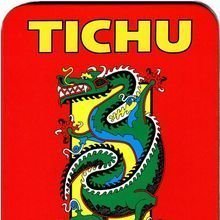
Tichu
Tabletop Game
Even though over 642 million Chinese play Tichu nearly every day, the game is very complicated for...
BoardGames CardGames TricktakingGames
Matthew Krueger (10051 KP) rated the Xbox One version of DOOM in Video Games
Mar 20, 2020
Kick Some Ass 2016 Style
Doom 2016- yes i called it this because when you talk about it to people, sometimes their like "which one". So i call this one "Doom 2016". So lets talk about it.
The Gameplay:
According to the game's executive producer Marty Stratton, the key principles of Doom's single-player mode are "badass demons, big effing guns, and moving really fast".
"Glory Kills" is a newly-introduced melee execution system; when enough damage has been dealt to an enemy, the game will highlight it and allow the player to perform a quick and violent melee takedown, rewarding the player with small health recovery.
The game features a large arsenal of weapons which can be collected and freely switched by players throughout the game and require no reloading.
Many enemies also return from the original game, such as the Revenant, Pinky, Mancubus, and Cyberdemon, with many also redesigned. Doom's campaign was made to be at least 13 hours long, and the "Ultra-Nightmare" difficulty level features permadeath, which causes the savegame to be lost once the player dies. The campaign also features 13 levels.
Many of the levels have multiple pathways and open areas, which allow players to explore and find collectibles and secrets throughout the levels. Other pickups include small Doomguy figurines that allow the player to view 3D models of different characters, and data files that expand on the characters and story. Additionally, each of the game's levels contains a hidden lever which opens an area extracted from a classic level in the original Doom or Doom II. Finding each of these areas unlocks them, making them accessible from the game's main menu in a section called Classic Maps.
The Plot:
Players take the role of an unnamed space marine as he battles demonic forces from Hell that have been unleashed by the Union Aerospace Corporation on a future-set colonized planet Mars.
The Thankz:
Thank you id software and Bethesda software for rebooting this game.
Doom 2016- is a epic game and return to the Doom format that once was and adds more new.
The Gameplay:
According to the game's executive producer Marty Stratton, the key principles of Doom's single-player mode are "badass demons, big effing guns, and moving really fast".
"Glory Kills" is a newly-introduced melee execution system; when enough damage has been dealt to an enemy, the game will highlight it and allow the player to perform a quick and violent melee takedown, rewarding the player with small health recovery.
The game features a large arsenal of weapons which can be collected and freely switched by players throughout the game and require no reloading.
Many enemies also return from the original game, such as the Revenant, Pinky, Mancubus, and Cyberdemon, with many also redesigned. Doom's campaign was made to be at least 13 hours long, and the "Ultra-Nightmare" difficulty level features permadeath, which causes the savegame to be lost once the player dies. The campaign also features 13 levels.
Many of the levels have multiple pathways and open areas, which allow players to explore and find collectibles and secrets throughout the levels. Other pickups include small Doomguy figurines that allow the player to view 3D models of different characters, and data files that expand on the characters and story. Additionally, each of the game's levels contains a hidden lever which opens an area extracted from a classic level in the original Doom or Doom II. Finding each of these areas unlocks them, making them accessible from the game's main menu in a section called Classic Maps.
The Plot:
Players take the role of an unnamed space marine as he battles demonic forces from Hell that have been unleashed by the Union Aerospace Corporation on a future-set colonized planet Mars.
The Thankz:
Thank you id software and Bethesda software for rebooting this game.
Doom 2016- is a epic game and return to the Doom format that once was and adds more new.
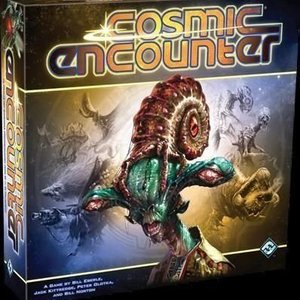
Cosmic Encounter
Tabletop Game
Build a galactic empire... In the depths of space, the alien races of the Cosmos vie with each other...
Boardgames GroupGames SpaceBattlegames
Purple Phoenix Games (2266 KP) rated Relic Runners in Tabletop Games
Jun 24, 2021
YES! More adventuring games! I do love adventure games. Relic Runners has players, well, running all over the board searching for, well, relics to add to their collections to bring back to their homelands and become renowned elite adventuristas! One of my wife’s favorite games, a Days of Wonder title, and one for which I have lukewarm feelings. But why?
Relic Runners is a route-building, pick-up-and-deliver, set collection game that puts players in a central camp and has them exploring outward and around the jungle building familiar pathways and exploiting riches from temples and ruins searching for those sweet sweet relics. The winner is the player who collects the most amount of VP from coins, temple pieces, and relics. So let’s get exploring!
To setup, populate the board with toolboxes, shrines, and ruins per the rulebook. Give each player a playmat and all components of matching color. The explorer bust will begin the game in the camp in the middle of the board along with two rations per player. On each playmat place the pathways and rations in their spots, and the toolbox tokens in their spot with one (or more depending on player special power) at the bottom of the Progression Table. The game can now begin!
The game ends when, depending on player count, a specific number of relics have been claimed by the players. Relics are claimed by completing Relic Expeditions, though we always call them Relic Runs, because that’s kinda the title of the game. In order to make a Relic Run players will need to have explored ruins and removed layers of shrines in order to reveal the relics. Movement is unique in Relic Runners because players may move from one location to the next for free if it is a “familiar” path marked with a pathway token in their color plus one space either before or after the familiar pathways. So a player can effectively run through five or six spots on the board if they had previously been able to place pathway tokens on the paths between the spots. This is how effective Relic Runs are accomplished.
When players pass along water trails they may encounter toolboxes. When these toolboxes are flipped to their inactive side the player will be able to move one of their toolbox tokens up the Progression Table to add effectiveness to their player. These tech tree increments could include increased ability to explore and find additional supplies, improve movement, or even give players more actions and bonuses.
Players will be running all around the board trying to uncover shrine tiles for points and abilities, upgrading their characters for efficiency, and attempting multiple Relic Runs as often as possible to bring the game’s end. The player with the most coin, combinations of relics, and temple layers is the winner!
Components. I mentioned in my opener that this is a Days of Wonder game. So? Well, Days of Wonder only produce ONE new title every year, and they seem to put all their eggs into that one big game (not including expansions for other titles throughout the year). Relic Runners is no different. The components are truly wonderful. The board and cardboard bits are great. The temples are unique and interesting. The plastic bits that begin on playmats and the base camp are quite fine. The relics, however, are simply spectacular. There are four types of relics in the game and 20 relics are included in the box. It’s all very impressive and I have had no issues with the components here nor with any Days of Wonder game. They really know what they’re doing.
The gameplay, to me, is just not my thing. Like I mentioned earlier, my wife absolutely adores this game. I can see why she does, but I feel there are other adventure style games that I would prefer to play. Now, Relic Runners is a good game. Josh rated it a six, so he loves it too. For me some of the movement mechanics are weird in that you have to move every turn so that you can’t just travel to a shrine and dismantle it over three turns. I get it. I do, but I just don’t like it. It doesn’t make thematic sense that an explorer would run to a shrine, begin work, then leave it unattended for other explorers to finish the job. So there’s a disconnect for me.
Also, I would have loved to have seen more variation in the player Progression Table. Make each character truly unique to appeal to replayability and different players’ play styles. Obviously I’m no designer, but that would have made a difference for me.
I love the components, am just okay with the art style, and am okay or less with the gameplay. But, Josh and Kristin both love it, and it will certainly appeal to many gamers. I won’t be getting rid of it, but I also won’t be suggesting we play it very often at all. However, if your collection needs a unique adventure style game featuring some interesting movement mechanics and superb components, pick up a copy of Relic Runners. Purple Phoenix Games gives it a 14 / 18. I was hoping for more Indiana Jones but I got cross-country Dora the Explorer.
Relic Runners is a route-building, pick-up-and-deliver, set collection game that puts players in a central camp and has them exploring outward and around the jungle building familiar pathways and exploiting riches from temples and ruins searching for those sweet sweet relics. The winner is the player who collects the most amount of VP from coins, temple pieces, and relics. So let’s get exploring!
To setup, populate the board with toolboxes, shrines, and ruins per the rulebook. Give each player a playmat and all components of matching color. The explorer bust will begin the game in the camp in the middle of the board along with two rations per player. On each playmat place the pathways and rations in their spots, and the toolbox tokens in their spot with one (or more depending on player special power) at the bottom of the Progression Table. The game can now begin!
The game ends when, depending on player count, a specific number of relics have been claimed by the players. Relics are claimed by completing Relic Expeditions, though we always call them Relic Runs, because that’s kinda the title of the game. In order to make a Relic Run players will need to have explored ruins and removed layers of shrines in order to reveal the relics. Movement is unique in Relic Runners because players may move from one location to the next for free if it is a “familiar” path marked with a pathway token in their color plus one space either before or after the familiar pathways. So a player can effectively run through five or six spots on the board if they had previously been able to place pathway tokens on the paths between the spots. This is how effective Relic Runs are accomplished.
When players pass along water trails they may encounter toolboxes. When these toolboxes are flipped to their inactive side the player will be able to move one of their toolbox tokens up the Progression Table to add effectiveness to their player. These tech tree increments could include increased ability to explore and find additional supplies, improve movement, or even give players more actions and bonuses.
Players will be running all around the board trying to uncover shrine tiles for points and abilities, upgrading their characters for efficiency, and attempting multiple Relic Runs as often as possible to bring the game’s end. The player with the most coin, combinations of relics, and temple layers is the winner!
Components. I mentioned in my opener that this is a Days of Wonder game. So? Well, Days of Wonder only produce ONE new title every year, and they seem to put all their eggs into that one big game (not including expansions for other titles throughout the year). Relic Runners is no different. The components are truly wonderful. The board and cardboard bits are great. The temples are unique and interesting. The plastic bits that begin on playmats and the base camp are quite fine. The relics, however, are simply spectacular. There are four types of relics in the game and 20 relics are included in the box. It’s all very impressive and I have had no issues with the components here nor with any Days of Wonder game. They really know what they’re doing.
The gameplay, to me, is just not my thing. Like I mentioned earlier, my wife absolutely adores this game. I can see why she does, but I feel there are other adventure style games that I would prefer to play. Now, Relic Runners is a good game. Josh rated it a six, so he loves it too. For me some of the movement mechanics are weird in that you have to move every turn so that you can’t just travel to a shrine and dismantle it over three turns. I get it. I do, but I just don’t like it. It doesn’t make thematic sense that an explorer would run to a shrine, begin work, then leave it unattended for other explorers to finish the job. So there’s a disconnect for me.
Also, I would have loved to have seen more variation in the player Progression Table. Make each character truly unique to appeal to replayability and different players’ play styles. Obviously I’m no designer, but that would have made a difference for me.
I love the components, am just okay with the art style, and am okay or less with the gameplay. But, Josh and Kristin both love it, and it will certainly appeal to many gamers. I won’t be getting rid of it, but I also won’t be suggesting we play it very often at all. However, if your collection needs a unique adventure style game featuring some interesting movement mechanics and superb components, pick up a copy of Relic Runners. Purple Phoenix Games gives it a 14 / 18. I was hoping for more Indiana Jones but I got cross-country Dora the Explorer.
Rikki Hammond (33 KP) rated Drakon (fourth edition) in Tabletop Games
May 24, 2019
Quick to teach and learn (2 more)
Fast Turns, little downtime
Player powers are balanced
Higher player counts can be too chaotic (2 more)
Infinite loops can become annoying
Some games are more exciting than others
A Simple, Light Filler of a Dungeon Game
The best way that I can describe Drakon is that it is 'Carcassonne in a dungeon.' It's just as easy to pick up and play, but adds the concept of building your own dungeon as you progress through the game.
Each player will have 4 tiles in their hand, and on their turn, they can either place a tile (drawing a new one afterwards) or move their character into an adjacent chamber. Each tile has a door or an arrow on each side. You can place a tile door to door or arrow to door, but never arrow to arrow. Once a player moves through a door, you can't go back the eay you came (by the usual means anyway.) The goal of the game is to collect 10 coins through entering a chamber with gold in it, or by stealing them from another player. Each coin will have a value between 1 and 3, and the players keep them secret from the others.
A chamber might have an effect associated with it, which is activated when someone mives into it, such as allowing you to rotate a chamber, removing one from the game entirely, teleporting to another part of the dungeon, or even unleashing Drakon the dragon into the dungeon.
Once Drakon is in the dungeon, whoever next lands on her space can move her up to 3 spaces, ignoring doors and arrows along the way. If she ends on a space with a character, that player must put back a random coin into the stack and return to the entrance chamber.
Once someone collects 10 coins total, they win the game. If the tile stack runs out, the game automatically ends, and the player with the most coins at the end will be the winner.
For the base game, I would say that Drakon is TOO simple, and I highly recommend playing with the alternate methods, which gives each character it's own unique power to use once per game, and whoever collects 10 coins must then either make it back to the entrance chamber, make it to a teleport tile, or use an escape tile. This makes the game a lot more fun in my opinion, and also adds the element of the other players trying to stop you if they suspect you are trying to escape.
Drakon can be a mixed bag. Sometimes the games are really enjoyable, as the chambee effects can really play havoc with other players, esoecially if Drakon comes out. Other times, it can be rather boring, and sometimes a player can build an infinite loop of collecting coins, with no way of stopping them, which isn't really fun for anyone. I also feel that anything over 4 players makes the game a little too chaotic, and it can make the game overstay it's welcome. Generally though, Drakon is a quick, light filler game that can hold up well in anyones collection.
Each player will have 4 tiles in their hand, and on their turn, they can either place a tile (drawing a new one afterwards) or move their character into an adjacent chamber. Each tile has a door or an arrow on each side. You can place a tile door to door or arrow to door, but never arrow to arrow. Once a player moves through a door, you can't go back the eay you came (by the usual means anyway.) The goal of the game is to collect 10 coins through entering a chamber with gold in it, or by stealing them from another player. Each coin will have a value between 1 and 3, and the players keep them secret from the others.
A chamber might have an effect associated with it, which is activated when someone mives into it, such as allowing you to rotate a chamber, removing one from the game entirely, teleporting to another part of the dungeon, or even unleashing Drakon the dragon into the dungeon.
Once Drakon is in the dungeon, whoever next lands on her space can move her up to 3 spaces, ignoring doors and arrows along the way. If she ends on a space with a character, that player must put back a random coin into the stack and return to the entrance chamber.
Once someone collects 10 coins total, they win the game. If the tile stack runs out, the game automatically ends, and the player with the most coins at the end will be the winner.
For the base game, I would say that Drakon is TOO simple, and I highly recommend playing with the alternate methods, which gives each character it's own unique power to use once per game, and whoever collects 10 coins must then either make it back to the entrance chamber, make it to a teleport tile, or use an escape tile. This makes the game a lot more fun in my opinion, and also adds the element of the other players trying to stop you if they suspect you are trying to escape.
Drakon can be a mixed bag. Sometimes the games are really enjoyable, as the chambee effects can really play havoc with other players, esoecially if Drakon comes out. Other times, it can be rather boring, and sometimes a player can build an infinite loop of collecting coins, with no way of stopping them, which isn't really fun for anyone. I also feel that anything over 4 players makes the game a little too chaotic, and it can make the game overstay it's welcome. Generally though, Drakon is a quick, light filler game that can hold up well in anyones collection.
Purple Phoenix Games (2266 KP) rated Point Salad in Tabletop Games
Nov 1, 2021
What does “elegant design” mean to you? For me, it is a game that has been well-fleshed out and the rules, components, and mechanics are not over-fluffed. I hear and see so many games being described as having elegant design, and I sit and ponder sometimes because I have played the game in question and it certainly doesn’t follow my personal interpretation of the term. Point Salad, however, is the perfect example of elegant design – to me. Follow along to learn how such a simple game can cause such great experiences.
Simply put, Point Salad is a tableau-building game where players are drafting cards with specific scoring rules and sets of the six different suits to maximize the scoring of their drafted score cards. Each card in the game is double-sided, with one side showing a vegetable and the other side showing a unique scoring system. The player who earns the most points at the end of the game will be the winner and be forced to eat a salad reflecting their drafted veggies from the game. All right, that isn’t true, but they CAN gloat as much as they please.
To setup, construct the deck as outlined in the rules per the number of players. Shuffle the deck and roughly divide into three stacks, point side up. From these stacks place out two cards, veggie side up, below them. Choose the first player and the harvesting may begin!
On a turn, the active player may choose to draft one point card or two veggie cards from those visible in the market. They now place the cards in their personal tableau in front of themselves and the turn moves to the next player. The game continues in this fashion of drafting one or two cards every turn until all cards have been drafted.
Once all cards are drafted from the market, players analyze their scoring cards and determine points using the veggie cards they drafted. As each point card depicts a unique scoring set, each player may end with wildly different score totals. The player with the most points is the winner!
Components. This one is easy. It’s a deck of 108 double-sided cards and a tiny set of rules. The cards are all great quality and feature the most clear and appropriate art by Dylan Mangini. I have grown to really love his artwork on different games – I really dig his style. Components in this one are wonderful and I am considering sleeving the game because I just want to keep it pristine through the years.
It is certainly no surprise that I adore this game. Honestly, I only even gave it a shot because my friend Bethany, of Ryan and Bethany Board Game Reviews, placed it in one of her Top 10 lists and I had oftentimes simply passed it up at the FLGS. I am super glad she turned me on to this one, as it is easily one of my new favorites to bring to the table. I do have one tiny issue with the game. The box reads for ages 8+ but my 5-year-old son has zero problems understanding and playing the game. I mean, I have to read (and sometimes explain) the point cards to him, but I love seeing him think about and work through some tactics while playing.
I think that for me and my family, Point Salad fills a nice little niche in my collection. It is an excellent introduction to both drafting and tableau-building that other games can build upon for us. I very much enjoy the possibility of never playing the same game twice as 108 double-sided cards offers such variability and replayability that I hope will keep the game from becoming boring over multiple plays. Right now, though, it is humming along for us, and we are so grateful to Miss Bethany for introducing us to this little gem! Purple Phoenix Games gives this one a delicious 5 / 6. If you are looking for that low-stress, but very tactical, card game for easygoing nights, pick yourself up a copy of Point Salad.
Simply put, Point Salad is a tableau-building game where players are drafting cards with specific scoring rules and sets of the six different suits to maximize the scoring of their drafted score cards. Each card in the game is double-sided, with one side showing a vegetable and the other side showing a unique scoring system. The player who earns the most points at the end of the game will be the winner and be forced to eat a salad reflecting their drafted veggies from the game. All right, that isn’t true, but they CAN gloat as much as they please.
To setup, construct the deck as outlined in the rules per the number of players. Shuffle the deck and roughly divide into three stacks, point side up. From these stacks place out two cards, veggie side up, below them. Choose the first player and the harvesting may begin!
On a turn, the active player may choose to draft one point card or two veggie cards from those visible in the market. They now place the cards in their personal tableau in front of themselves and the turn moves to the next player. The game continues in this fashion of drafting one or two cards every turn until all cards have been drafted.
Once all cards are drafted from the market, players analyze their scoring cards and determine points using the veggie cards they drafted. As each point card depicts a unique scoring set, each player may end with wildly different score totals. The player with the most points is the winner!
Components. This one is easy. It’s a deck of 108 double-sided cards and a tiny set of rules. The cards are all great quality and feature the most clear and appropriate art by Dylan Mangini. I have grown to really love his artwork on different games – I really dig his style. Components in this one are wonderful and I am considering sleeving the game because I just want to keep it pristine through the years.
It is certainly no surprise that I adore this game. Honestly, I only even gave it a shot because my friend Bethany, of Ryan and Bethany Board Game Reviews, placed it in one of her Top 10 lists and I had oftentimes simply passed it up at the FLGS. I am super glad she turned me on to this one, as it is easily one of my new favorites to bring to the table. I do have one tiny issue with the game. The box reads for ages 8+ but my 5-year-old son has zero problems understanding and playing the game. I mean, I have to read (and sometimes explain) the point cards to him, but I love seeing him think about and work through some tactics while playing.
I think that for me and my family, Point Salad fills a nice little niche in my collection. It is an excellent introduction to both drafting and tableau-building that other games can build upon for us. I very much enjoy the possibility of never playing the same game twice as 108 double-sided cards offers such variability and replayability that I hope will keep the game from becoming boring over multiple plays. Right now, though, it is humming along for us, and we are so grateful to Miss Bethany for introducing us to this little gem! Purple Phoenix Games gives this one a delicious 5 / 6. If you are looking for that low-stress, but very tactical, card game for easygoing nights, pick yourself up a copy of Point Salad.
